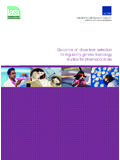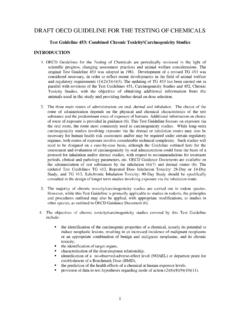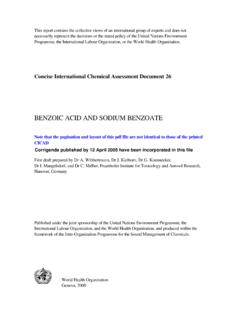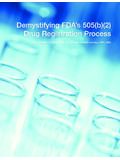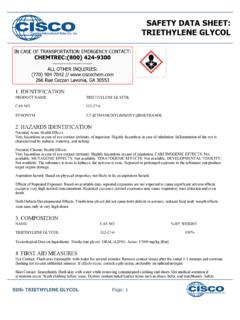Transcription of METHYL METHACRYLATE - WHO
1 This report contains the collective views of an international group of experts and does notnecessarily represent the decisions or the stated policy of the United Nations EnvironmentProgramme, the International Labour Organisation, or the World Health International Chemical Assessment Document 4 METHYL METHACRYLATEF irst draft prepared by Ms W. Dormer, Ms R. Gomes, and Ms Meek,Environmental Health Directorate,Health CanadaNote that the layout and pagination of this pdf file are not identical to the printed CICADP ublished under the joint sponsorship of the United Nations Environment Programme, theInternational Labour Organisation, and the World Health Organization, and produced within theframework of the Inter-Organization Programme for the Sound Management of Health OrganizationGeneva, 1998 The International Programme on Chemical Safety (IPCS), established in 1980, is a joint ventureof the United Nations Environment Programme (UNEP), the International Labour Organisation (ILO),and the World Health Organization (WHO).
2 The overall objectives of the IPCS are to establish thescientific basis for assessment of the risk to human health and the environment from exposure tochemicals, through international peer review processes, as a prerequisite for the promotion of chemicalsafety, and to provide technical assistance in strengthening national capacities for the sound managementof Inter-Organization Programme for the Sound Management of Chemicals (IOMC) wasestablished in 1995 by UNEP, ILO, the Food and Agriculture Organization of the United Nations, WHO,the United Nations Industrial Development Organization, and the Organisation for Economic Co-operationand Development (Participating Organizations), following recommendations made by the 1992 UNConference on Environment and Development to strengthen cooperation and increase coordination in thefield of chemical safety. The purpose of the IOMC is to promote coordination of the policies andactivities pursued by the Participating Organizations, jointly or separately, to achieve the soundmanagement of chemicals in relation to human health and the Library Cataloguing in Publication DataMethyl METHACRYLATE .
3 (Concise international chemical assessment document ; 4) toxicity exposure Programme on ChemicalSafety 92 4 153004 9(NLM Classification: QV 50) ISSN 1020-6167 The World Health Organization welcomes requests for permission to reproduce or translate itspublications, in part or in full. Applications and enquiries should be addressed to the Office ofPublications, World Health Organization, Geneva, Switzerland, which will be glad to provide the latestinformation on any changes made to the text, plans for new editions, and reprints and translations alreadyavailable. World Health Organization 1998 Publications of the World Health Organization enjoy copyright protection in accordance with theprovisions of Protocol 2 of the Universal Copyright Convention. All rights designations employed and the presentation of the material in this publication do not imply theexpression of any opinion whatsoever on the part of the Secretariat of the World Health Organizationconcerning the legal status of any country, territory, city, or area or of its authorities, or concerning thedelimitation of its frontiers or mention of specific companies or of certain manufacturers products does not imply that they areendorsed or recommended by the World Health Organization in preference to others of a similar naturethat are not mentioned.
4 Errors and omissions excepted, the names of proprietary products aredistinguished by initial capital Federal Ministry for the Environment, Nature Conservation and Nuclear Safety, Germany,provided financial support for the printing of this by Wissenschaftliche Verlagsgesellschaft mbH, D-70009 Stuttgart 10iiiTABLE OF AND PHYSICAL/CHEMICAL OF HUMAN AND ENVIRONMENTAL TRANSPORT, DISTRIBUTION, AND LEVELS AND HUMAN KINETICS AND METABOLISM IN LABORATORY ANIMALS AND ON LABORATORY MAMMALS AND IN VITRO TEST and exposure and and related and developmental and neurological ON ON OTHER ORGANISMS IN THE LABORATORY AND Aquatic Terrestrial Evaluation of health 23 identification and dose response 23 for setting guidance values for METHYL 23 risk Evaluation of environmental EVALUATIONS BY INTERNATIONAL 25 Concise International Chemical Assessment Document HEALTH PROTECTION AND EMERGENCY health Advice to Health surveillance and fire REGULATIONS, GUIDELINES.
5 AND 26 INTERNATIONAL CHEMICAL SAFETY 29 APPENDIX 1 SOURCE 33 APPENDIX 2 CICAD PEER 34 APPENDIX 3 CICAD FINAL REVIEW SUM D 36 RESUMEN DE ORIENTACI 38 METHYL methacrylate1 FOREWORDC oncise International Chemical AssessmentDocuments (CICADs) are the latest in a family ofpublications from the International Programme onChemical Safety (IPCS) a cooperative programme ofthe World Health Organization (WHO), the InternationalLabour Organisation (ILO), and the United NationsEnvironment Programme (UNEP). CICADs join theEnvironmental Health Criteria documents (EHCs) asauthoritative documents on the risk assessment are concise documents that providesummaries of the relevant scientific informationconcerning the potential effects of chemicals uponhuman health and/or the environment. They are basedon selected national or regional evaluation documents oron existing EHCs. Before acceptance for publication asCICADs by IPCS, these documents have undergoneextensive peer review by internationally selected expertsto ensure their completeness, accuracy in the way inwhich the original data are represented, and the validityof the conclusions primary objective of CICADs is character-ization of hazard and dose response from exposure to achemical.
6 CICADs are not a summary of all availabledata on a particular chemical; rather, they include onlythat information considered critical for characterizationof the risk posed by the chemical. The critical studiesare, however, presented in sufficient detail to supportthe conclusions drawn. For additional information, thereader should consult the identified source documentsupon which the CICAD has been to human health and the environment willvary considerably depending upon the type and extentof exposure. Responsible authorities are stronglyencouraged to characterize risk on the basis of locallymeasured or predicted exposure scenarios. To assist thereader, examples of exposure estimation and riskcharacterization are provided in CICADs, wheneverpossible. These examples cannot be considered asrepresenting all possible exposure situations, but areprovided as guidance only. The reader is referred toEHC 1701 for advice on the derivation of health-basedguidance every effort is made to ensure that CICAD srepresent the current status of knowledge, new informa-tion is being developed constantly.
7 Unless otherwisestated, CICADs are based on a search of the scientificliterature to the date shown in the executive summary. Inthe event that a reader becomes aware of new infor-mation that would change the conclusions drawn in aCICAD, the reader is requested to contact the IPCS toinform it of the new flow chart shows the procedures followed toproduce a CICAD. These procedures are designed totake advantage of the expertise that exists around theworld expertise that is required to produce the high-quality evaluations of toxicological, exposure, and otherdata that are necessary for assessing risks to humanhealth and/or the first draft is based on an existing national,regional, or international review. Authors of the firstdraft are usually, but not necessarily, from the institutionthat developed the original review. A standard outlinehas been developed to encourage consistency in form. The first draft undergoes primary review by IPCS andone or more experienced authors of criteria documents toensure that it meets the specified criteria for second stage involves international peerreview by scientists known for their particular expertiseand by scientists selected from an international rostercompiled by IPCS through recommendations from IPCS national Contact Points and from IPCS ParticipatingInstitutions.
8 Adequate time is allowed for the selectedexperts to undertake a thorough review. Authors arerequired to take reviewers comments into account andrevise their draft, if necessary. The resulting seconddraft is submitted to a Final Review Board together withthe reviewers CICAD Final Review Board has severalimportant functions: to ensure that each CICAD has been subjected toan appropriate and thorough peer review; to verify that the peer reviewers comments havebeen addressed appropriately; to provide guidance to those responsible for thepreparation of CICADs on how to resolve anyremaining issues if, in the opinion of the Board, theauthor has not adequately addressed all commentsof the reviewers; and to approve CICADs as international International Programme on Chemical Safety (1994)Assessing human health risks of chemicals: derivationof guidance values for health-based exposure , World Health Organization (EnvironmentalHealth Criteria 170).
9 Concise International Chemical Assessment Document 42 selection OF HIGH QUALITYNATIONAL/REGIONALASSESSMENT DOCUMENT(S)CICAD PREPARATION FLOW CHARTFIRST DRAFTPREPAREDPRIMARY REVIEW AT PRODUCER LEVEL(1-2 OTHER DOCUMENT PRODUCERS) 1 PRODUCERREVIEW BY IPCS CONTACT POINTSFINAL REVIEW BOARD 3 FINAL DRAFT 4 EDITINGAPPROVAL BY DIRECTOR, IPCSPUBLICATIONRESPONSIBLE OFFICER (RO) selection OF PRIORITY CHEMICAL1 Revision as Taking into account the comments from The second draft of documents is submitted to the Final Review Board together with the reviewers comments (6-10 CICADs are usually reviewed atthe Final Review Board). In the case of pesticides the role of the Final Review Board is fulfilled by a joint meeting on Includes any revisions requested by the Final Review OF COMMENTS (PRODUCER/RO),PREPARATIONOF SECOND DRAFT 2 METHYL methacrylate3 Board members serve in their personal capacity, not asrepresentatives of any organization, government, orindustry.
10 They are selected because of their expertise inhuman and environmental toxicology or because of theirexperience in the regulation of chemicals. Boards arechosen according to the range of expertise required for ameeting and the need for balanced members, authors, reviewers, consultants,and advisers who participate in the preparation of aCICAD are required to declare any real or potentialconflict of interest in relation to the subjects underdiscussion at any stage of the process. Representativesof nongovernmental organizations may be invited toobserve the proceedings of the Final Review Board. Observers may participate in Board discussions only atthe invitation of the Chairperson, and they may notparticipate in the final decision-making International Chemical Assessment Document 441. EXECUTIVE SUMMARYThis CICAD on METHYL METHACRYLATE was preparedby the Environmental Health Directorate of HealthCanada and was based principally on a Government ofCanada (1993) review to assess the potential effects onhuman health of indirect exposure to METHYL methac-rylate in the general environment as well as the chemi-cal s environmental effects and an International Agencyfor Research on Cancer review (IARC, 1994) concerningprimarily hazard identification for carcinogenicity.










